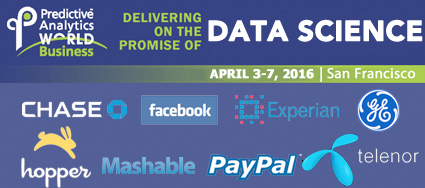Big Data analytics is now being applied at every stage of the retail process – working out what the popular products will be by predicting trends, forecasting where the demand will be for those products, optimizing pricing for a competitive edge, identifying the customers likely to be interested in them and working out the best way to approach them, taking their money and finally working out what to sell them next.
Today, retailers have a wide range of tools available to them in order to work out what will be this season’s “must have” items, whether that be children’s toys or designer dresses. Trend forecasting algorithms comb social media posts and web browsing habits to work out what’s causing a buzz, and ad-buying data is analysed to see what marketing departments will be pushing. Brands and marketers engage in “sentiment analysis”, using sophisticated machine learning-based algorithms to determine the context when a product is discussed, and this data can be used to accurately predict what the top selling products in a category are likely to be.
Once there’s an understanding of what products people will be buying, then retailers work on understanding where the demand will be. This involves gathering demographic data and economic indicators to build a picture of spending habits across the targeted market. Russian retailers, for example, have found that the demand for books increases exponentially as the weather gets colder. So retailers such as Ozon.ru increase the amount of book recommendations which appear in their customers’ feeds as the temperature drops in their local areas.

USE CODE PATIMES16 for 15% off Predictive Analytics World Conference pass.
Giant retailers such as Walmart spend millions on their real time merchandising systems – in fact Walmart is currently in the process of building the “world’s largest private cloud” to track, as they happen, millions of transactions every day. Algorithms track demand, inventory levels and competitor activity and automatically respond to market changes in real time, allowing action to be taken based on insights in a matter of minutes.
Big Data also plays a part in helping to determine when prices should be dropped – known as “mark down optimization”. Prior to the age of analytics most retailers would just reduce prices at the end of a buying season for a particular product line, when demand has almost gone. However analytics has shown that a more gradual reduction in price, from the moment demand starts to sag, generally leads to increased revenues. Experiments by US retailer Stage Stores found that this approach, backed by a predictive approach to determine the rise and fall of demand for a product, beat a traditional “end of season sale” approach 90% of the time.
Deciding which customers are likely to want a particular product, and the best way to go about putting it in front of them, is key here. To this end retailers rely heavily on recommendation engine technology online, and data collected through transactional records and loyalty programs off and online. Although Amazon may not yet be ready to ship products directly to our doors before we order them, it is already pushing them in the general direction. Demand is forecast for individual geographic areas based on the demographics they have on their customers in those areas. This means that when they do receive the orders they can be fulfilled more quickly and efficiently. Data on how individual customers interact and make contact with retailers is used to decide which is the best way to get their attention with a particular product or promotion – be it email, SMS or a mobile alert from an NFC transmitter when they walk or drive by a store.
Attracting the right kind of customers to your bricks ‘n’ mortar stores is key – too, as US department store giant Macy’s recently realized. Due to their analytics showing up a dearth of the vital “millennials” demographic group, it recently opened its One Below basement at its flagship New York store, offering “selfie walls” and while-you-wait customized 3D-printed smartphone cases. The idea is to attract young customers to the store who will hopefully go on to have an enduring lifetime value to the business.
CONTINUE READING: Access the complete article in Forbes, where it was originally published.
I write books, deliver keynote presentations and provide expert advice on big data, analytics, metrics and improving business performance. I have helped many of the world’s leading companies and governments on how to answer their most critical buisness questions using data and metrics. My recent books include ‘Big Data: Using SMART Big Data, Analytics and Metrics to Make Better Decisions And Improve Performance’ and ‘Key Performance Indicators: The 75 Measures Every Manager Needs To Know’. Why don’t you connect with me on Twitter (@bernardmarr) or LinkedIn (https://uk.linkedin.com/in/bernardmarr)?